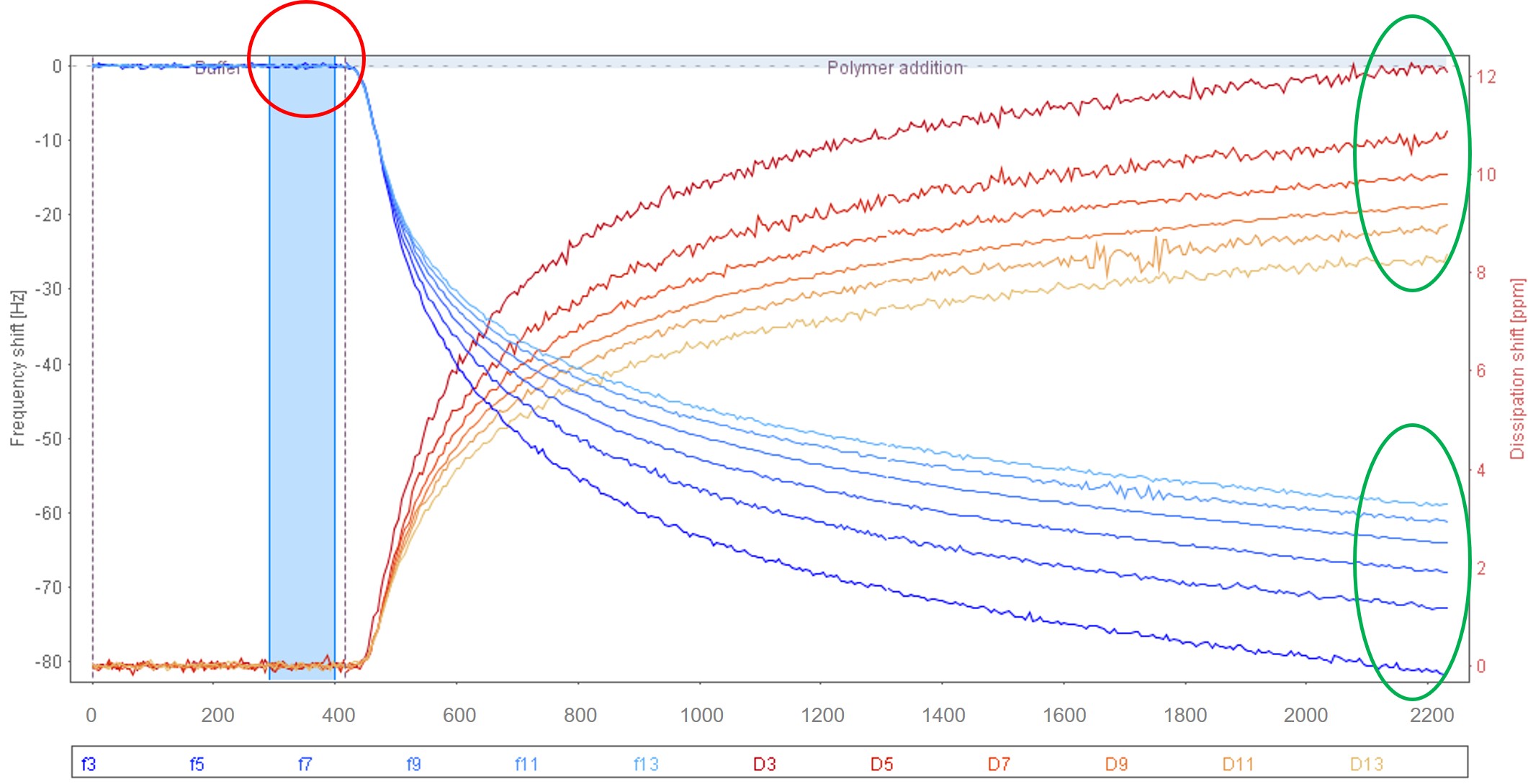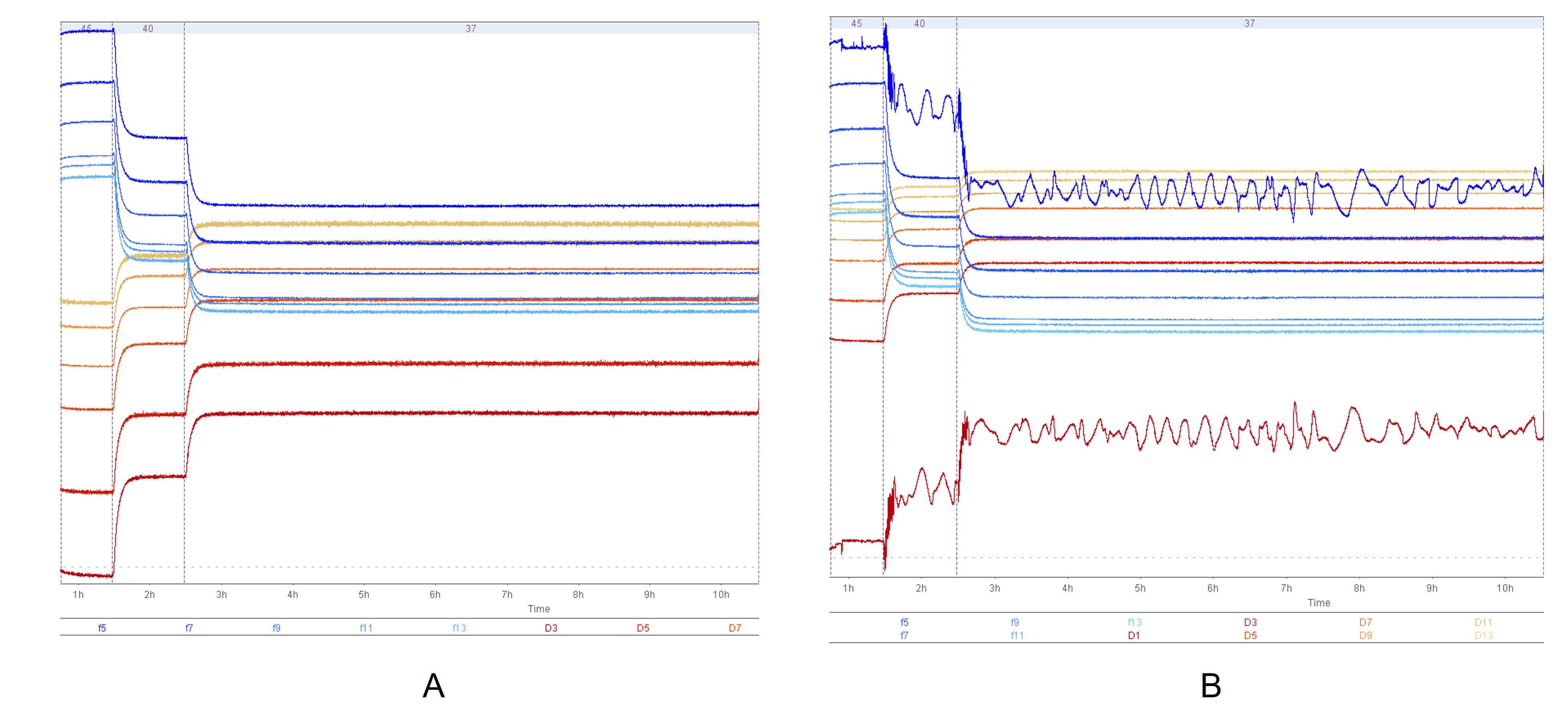
The overall goal with any experiment is information output, and the analysis output will be no better than the input. Successful data analysis therefore starts already in the lab. So why not make sure you get the most out of the time spent running experiments, and collect as much info as you can while you are at it? Here we list three simple ways that can help you get the most out of your QCM-D data collection.
For the data set to be high quality and straightforward to analyze, we must make sure that it captures as much information as possible about the process that we would like to analyze. We also want to minimize the presence of other processes that may compete with the phenomenon that we are interested in. To do this, we must pay careful attention to the entire measurement execution, i.e., the baseline, when to stop the experiment, and which harmonics to include in the measurement.


High quality data is a prerequisite for successful data analysis, and successful data analysis therefore starts already in the lab. Make sure you get the most out of the time you spend in the lab running experiments by starting well, ending well, and collecting as much information as possible there in between. Wait for the baseline to stabilize before you insert your samples, collect information from as many harmonics as possible, and wait for the process to terminate before you end the measurement.
Learn more about QCM-D data collection at the Biolin Scientific Academy
Compared to QCM, QCM-D measures an additional parameter, and provides more information about the system under study.
Discover how QCM-D analysis reveals real-time etching dynamics, helping optimize cleaning processes and protect surfaces from unwanted damage.
Discover how QSense QCM-D helps tackle fouling challenges across industries
Discover how QCM-D enables real-time, label-free analysis of supported lipid membrane formation, structure, and dynamics for advanced research
Learn how QSense QCM-D analysis can reveal membrane fouling dynamics and optimize cleaning strategies for more efficient water treatment
Learn how QSense QCM-D helps detect and prevent surface-induced instabilities in biologics. Join our webinar for insights and practical examples.
Learn about the top QSense sensors for analyzing biopharmaceutical drug-surface interactions in the context of IV bags.
Learn about QCM-D, Quartz Crystal Microbalance with Dissipation monitoring - an analytical tool for surface interaction studies at the nanoscale.
Explore QSense QCM-D sensors to optimize cleaning efficiency with real-time insights, enhancing formulations and protocols across various conditions.
Learn how how run small volume measurements with QSense Omni
Learn about of the acoustic technology, QCM-D, via musical instrument analogies.
Learn about how QSense analysis can be used to assess adsorption of biologics and excipients to materials used in IV-bags
Jennie Ringberg is a former employee at Biolin Scientific. She was the Global Technical Product Manager for QSense and also held roles as Application Specialist for QSense, In-House Sales Manager, and Academy Manager. Jennie holds a Master of Science in Bioengineering from Chalmers University of Technology and spent the first years after graduation focusing on membrane proteins and how to identify and characterize these in the best way.
